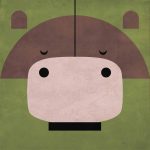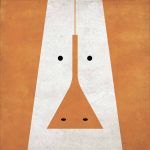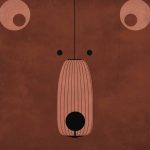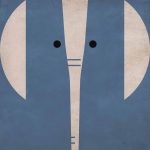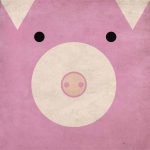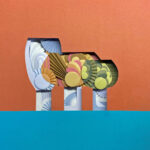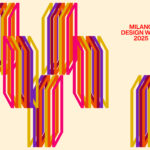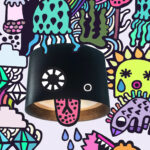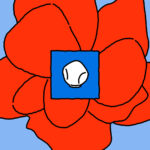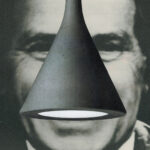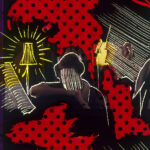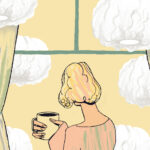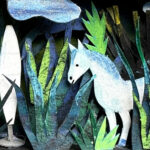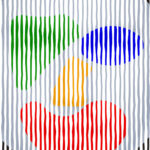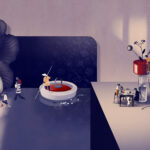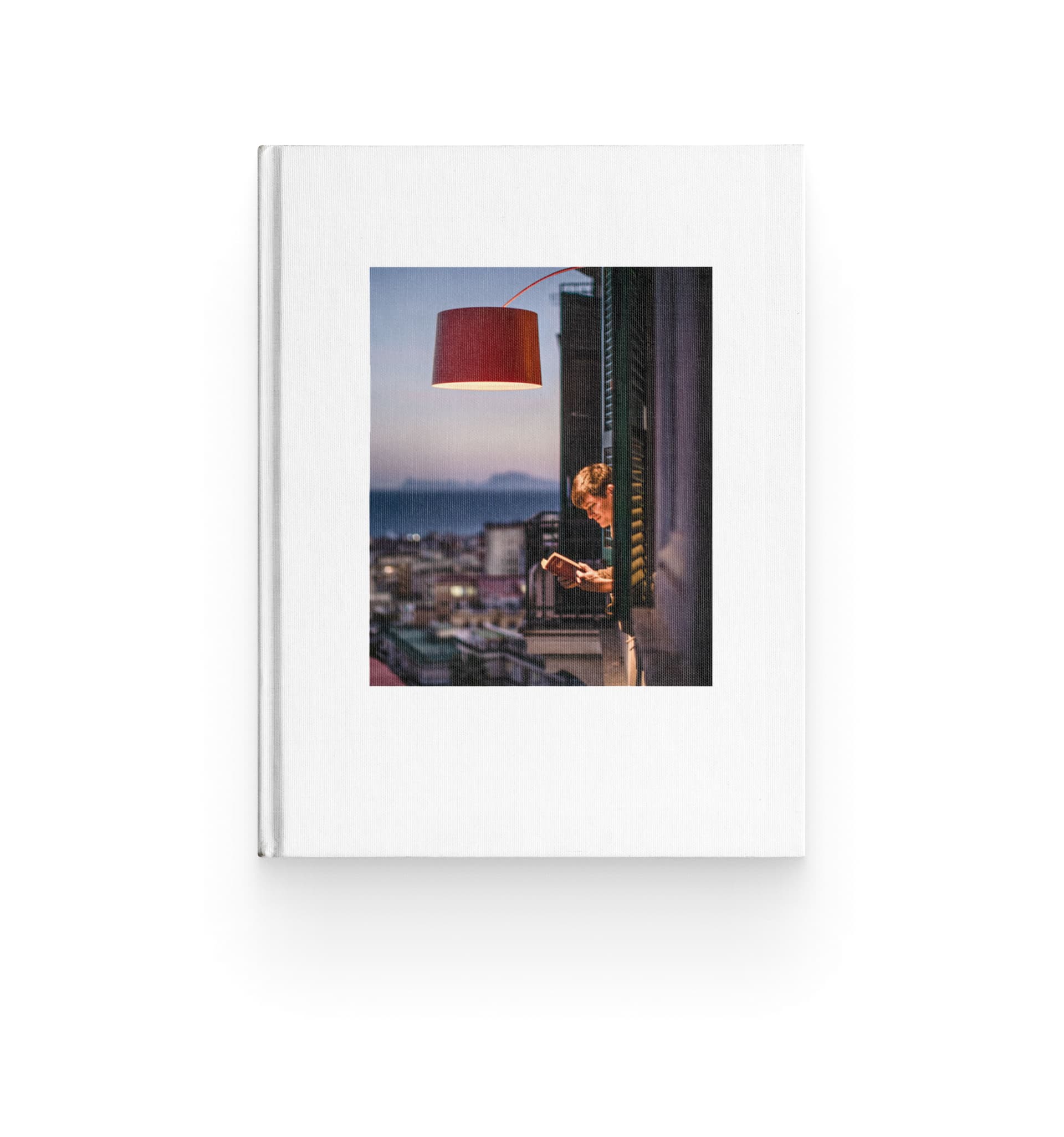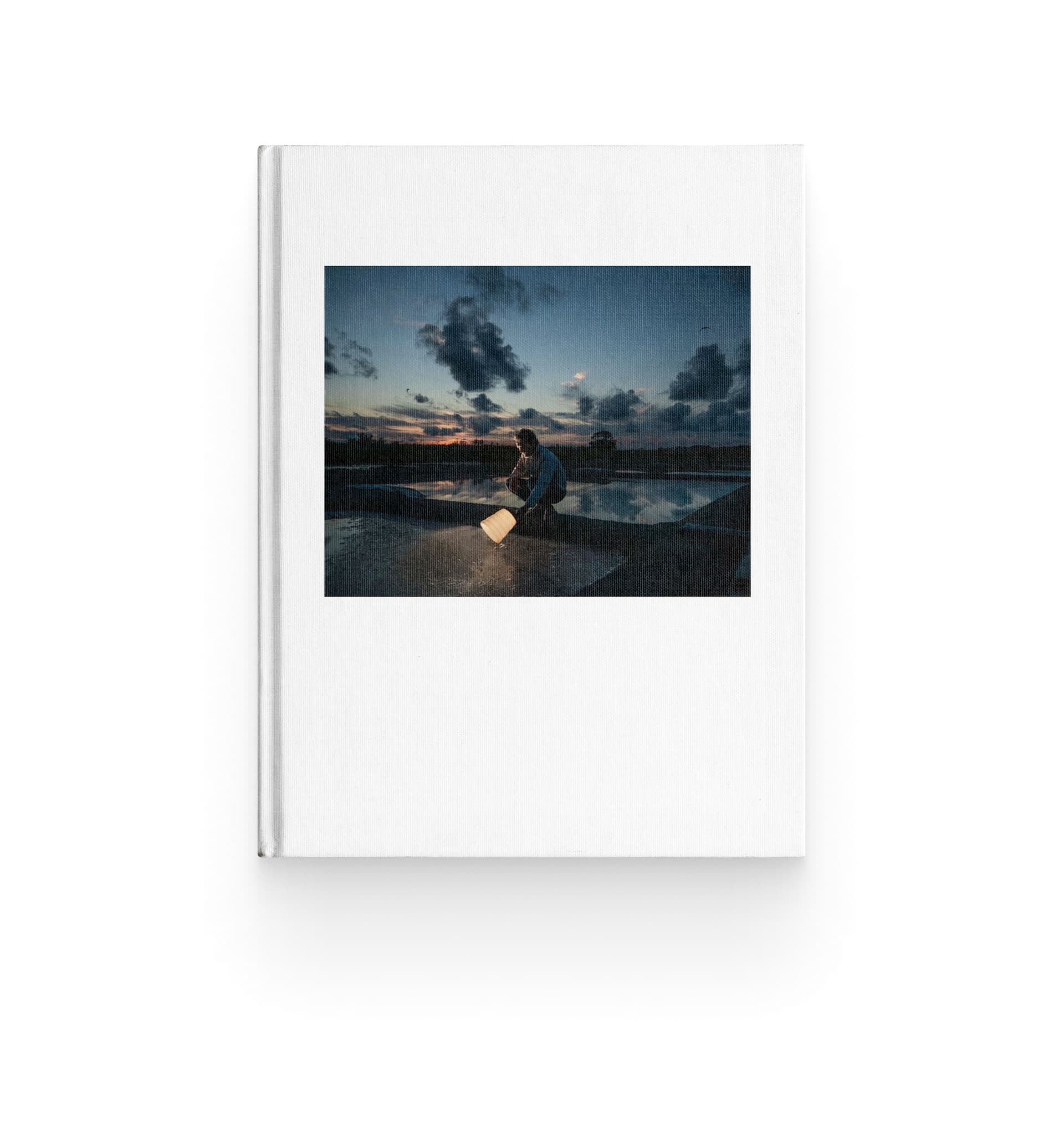A “Design Zoo”: Federico Babina’s creativity for “What’s in a Lamp?”
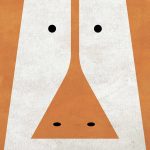
The project that transforms the @foscarinilamps Instagram feed into a virtual art gallery is now enriched with a new creative interpretation. Federico Babina, an Italian-born and Spanish-based architect and illustrator, is the fourth artist called upon to interpret Foscarini’s collections.
Federico Babina is known for the surreal worlds he creates with his illustrations and animations, inspired mainly by architecture and design. His series are unique, distinctive, and recognizable thanks to a style that is expressed in details, the wise balance of colors and proportions, the grunge patterns and – above all – in the ability of the artist to create and stimulate unexpected and surprising connections that strike the eyes, mind, and heart of the viewer.
In his new series “Lux Like”, part of Foscarini’s “What’s in a Lamp?” project, Federico Babina has had fun searching for and recognizing animals in the shapes of some of Foscarini’s lamps. Like in a pareidolia, he reduced them to elementary shapes – circles, rectangles, triangles, and lines – and transformed them into animals with character and expressiveness that live, speak, and breathe in a parallel universe: a sort of design zoo.
This exercise develops creativity and imagination by encouraging elastic thinking: you don’t see the lamp for what it is, but you spot the elephant that takes shape from it. A series of illustrations where Federico Babina plays seriously around shapes and colors. Where everything that appears may not be what it seems. Lamps that make up a Foscarini design zoo where animals are made of design.
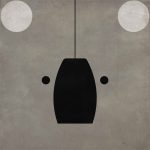
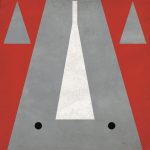
Tell us about yourself and your background. When did you start drawing, and how did you develop your signature style?
I am Federico Babina (since 1969), architect and graphic designer (since 1994), I live and work in Barcelona (since 2007), but above all I am a curious person (since always).
Every day, I strive to observe the world through the innocence of a child’s eyes, as they are able to have a totally unbiased view of things, free and unconditioned by experience. As a child, I dreamed of becoming an architect, and now that I am one, I sometimes long to be a child again.
I enjoy using different techniques to portray the world around me, and I am fascinated by the broad richness of language and the diversity of its forms.
I grew up with illustrated storybooks, enjoyed comic strips as a kid and took up architectural drawing in my adult life. Illustration is part of my world, fantasy and imagination
In my artworks, I aim to combine the rigor of architecture, the freedom of painting, the rhythm and pause of music, and the magical mystery of cinema. I try to mix seemingly unrelated languages that nevertheless dialogue with each other.
How do Federico Babina the Architect and Federico Babina the Illustrator coexist and influence each other?
An architect needs to be a good illustrator. Visual communication skills are an indispensable tool.
Drawing is the first step in shaping an idea. Ideas are then sculpted, modelled and transformed through illustration.
I do not take off the architect’s clothes to put on the illustrator’s costume.
The common trait in my work is myself. My approach and the way I work does not change depending on the job. I enjoy painting and I enjoy taking photographs as much as drawing and writing. I believe there is a certain expressive consistency in each and every one of us regardless of the medium we are using.
I can find analogies, similarities, and endless links between different expressive forms. Whether it is an illustration, a design object or a building, my creative process is very much the same and follows the same rules and paths. The creative process of an architectural composition is in line with the mechanisms that move and set in motion the engine of any intellectual creation.
Sometimes I am an architect with a passion for illustration and sometimes I am an illustrator with a passion for architecture.
How did the collaboration with Foscarini come about?
Foscarini contacted me asking me to find a personal way of interpreting a product idea rather than simply presenting an object as such. All this with a total expressive freedom. A collaboration of this kind is always a very exciting challenge. Objects exist and the point is to find a way of suggesting an alternative point of view.
In this project, you have combined humour and tenderness and put together an unexpected “zoo” starting from the iconic silhouettes of the lamps in the Foscarini collection. Can you tell us more about the inspiration behind this series?
The project is called LUX LIKE and works on perception. The idea is that of transforming the perception of the design object.
Our mind is capable of collecting and storing literally millions of images. Something that has always interested me is the associations we are able to make amongst these images.
Just like in ‘The Little Prince’: looking beyond the drawing of a hat and glimpsing the silhouette of a boa digesting an elephant.
In this project with Foscarini, lamps are transformed into animals that have character and expressiveness and that live, talk, and breathe in a parallel universe, a sort of design zoo.
As in a design pareidolia, I had fun in seeking out and spotting animals in the shapes of some of the lamps by Foscarini: it is a simple yet effective creative and imaginative exercise that allows us to develop ‘elastic thinking’.
Our gaze is unable to grasp the invisible and our mind mechanically draws its own conclusions and delivers its own rigorous judgements purely based on the evidence of appearance.
I have tried not to give the brain the rational input so that it can understand through knowledge but rather leave it free to look for an instinctive connection. To not see a lamp and interpret it as such, but to spot the elephant that embodies it.
LUX LIKE is a series of illustrations where I seriously play with volumes, colors and shapes. Where all that appears may not be what it seems.
Lamps that make up a Foscarini zoo where animals are made and built of design.
What is/are your favourite illustration(s) in this series and why?
I can’t choose amongst my illustrations. I can’t choose among my illustrations. It’s like asking someone to choose among their children. When I work on a series I see the single illustrations as pieces of a mosaic that represent a concept and an idea as a whole. They are elements of an overall jigsaw puzzle, none is fundamental and at the same time all of them as a whole are. The important thing is the overall composition that all pieces draw together.
In your illustrations and animations simple geometries combine to create arrangements that narrate, at a glance, stories that strike the eye, mind and hearth. Would you like to tell us more about the ‘storytelling’ component of your creative process?
As Bruno Munari used to say: to complicate is easy, to simplify is difficult.
Simplicity is the hardest thing to achieve. To simplify you have to remove, and in order to remove you have to be aware of which things are superfluous. One thing I always look for in my artwork is a storyline. A tale that takes you inside a story, like a door that opens into a parallel universe and offers the viewers some elements and tools to continue their story. The power of illustration is to leave a degree of freedom for interpretation. I start to tell stories and the viewer then continues them and sometimes even completes them.
Which are your main sources of inspiration in the world of art and illustration? And which architects do you appreciate the most?
Over the years I have immersed myself in and been nourished by the culture that was around me. We are like ‘blenders’ who mix and combine different ingredients to come up with a personal blend. There is not a single figure that I consider to be an inspiration. Many people inspired, helped, surprised and guided me. I don’t like to make rankings of this kind, I feel like a work-in-progress patchwork where several people, strangers or acquaintances, for better or for worse, have contributed and are still contributing to shape the overall composition and to define the arrangement of each piece.
I don’t really have any precise models or references. My sources range from the world of graphic design to art and architecture through comics and advertising. I have many lovers but I am not married to any of them….
Your work requires creativity and the ability to view reality from new and original perspectives. How do you keep your mind open and fresh to make space for new ideas? What are your sources of inspiration?
Well, I don’t really believe in inspiration. Ideas are there just there waiting for us – as long as we know how to spot them.
What I always look for is a generating element, a starting point from which to shape and sculpt an idea. Sometimes the image pivots around this central element as if driven by a centrifugal force, but other times it takes different and surprising directions. There is no rule in my creative process, it can either be a slow and laborious process or a sudden and intuitive one.
Looking for inspiration and ideas is a constant, everyday job. It is like walking towards a destination without really knowing how to get there. Sometimes you can easily find the way, and other times you get lost. However, all that matters is that you want to get there.
I try to look at things from different angles and perspectives. I experiment with flipping things over to interpret shapes without the constraints imposed by experience, trying to look at the world upside down. The world doesn’t change, the perspective does: looking at things to discover the voids, the silent parts and reveal the surprises concealed in the shapes.
I strive to listen and observe, to activate all my senses and then filter the information and come up with a personal result.
What is your favourite subject to draw?
Architecture is often the leading character. I like searching for (im)possible relationships between architecture and other realms and finding it in ‘sensitive locations’. I like discovering architecture hidden in parallel universes, and illustration helps me to explore alternative languages.
In my images, I try to create an imaginary and imagined dialogue among different worlds. The threads that connect and tie together the relationships can be either thin and transparent or strong and bold. A multifaceted and imaginative texture that connects architecture with seemingly different worlds in an illustrated ‘unicum’.
I try to find the hidden architecture and to make it speak a different language in order to reach an audience that may be ‘alien’ to architecture.
Do you have a ritual when drawing?
I am more productive in the morning and I usually have more ideas at night but I don’t have a fixed rule. Things can change and I am always looking for new ingredients to add new flavors to my visuals. I’m constantly changing, evolving, moving forward and sometimes even going backwards… and my projects follow my changes and fluctuations. I like to feel free, free to express myself without having to be limited in the prison of a specific style or form.
When I do my illustrations, I always use a combination of different techniques and software. From hand drawing to vector drawing and 3D modelling software. These different ingredients allow me to achieve the desired blend and mood. Every technique is a useful working tool. I like to mix and match different methods to create the graphic canvas, which always leads to more valuable results.
What is creativity for you?
This is a difficult question. Creativity is somewhat like making a gift. You have to choose it carefully. And once you have chosen the gift, you have to wrap it. The package is important, not only does it contain and protect it but it may or may not reveal the content. The paper that wraps it is like the surface of a creative artwork. It is the first thing one sees when receiving a gift. Finally, the ribbon, which is like a decoration that adds a touch of delicacy and elegance. Whoever observes a creative artwork of any kind is like someone who receives a gift. They unwrap it, open it and finally discover the surprise. Sometimes you like it and sometimes you don’t…
